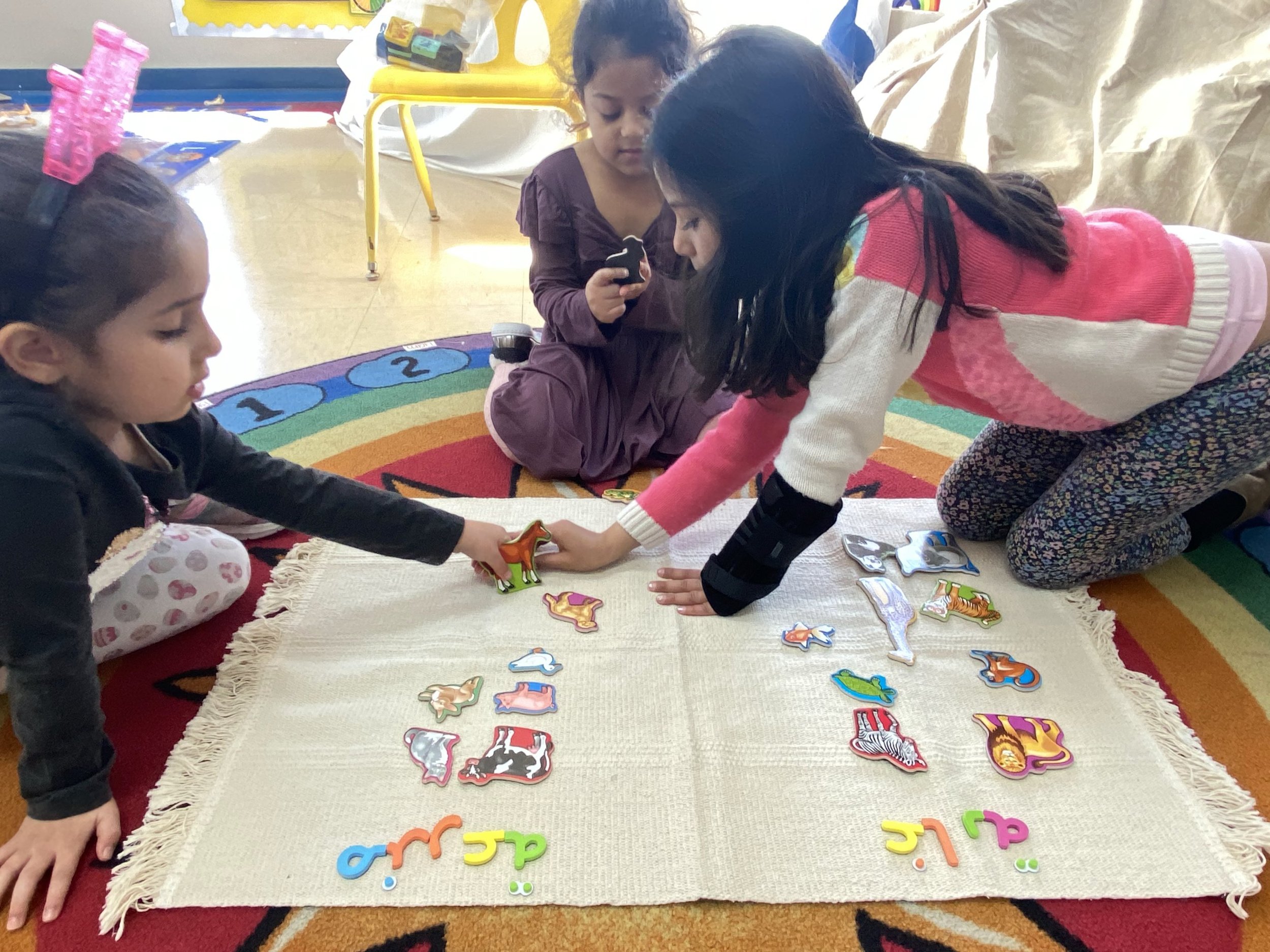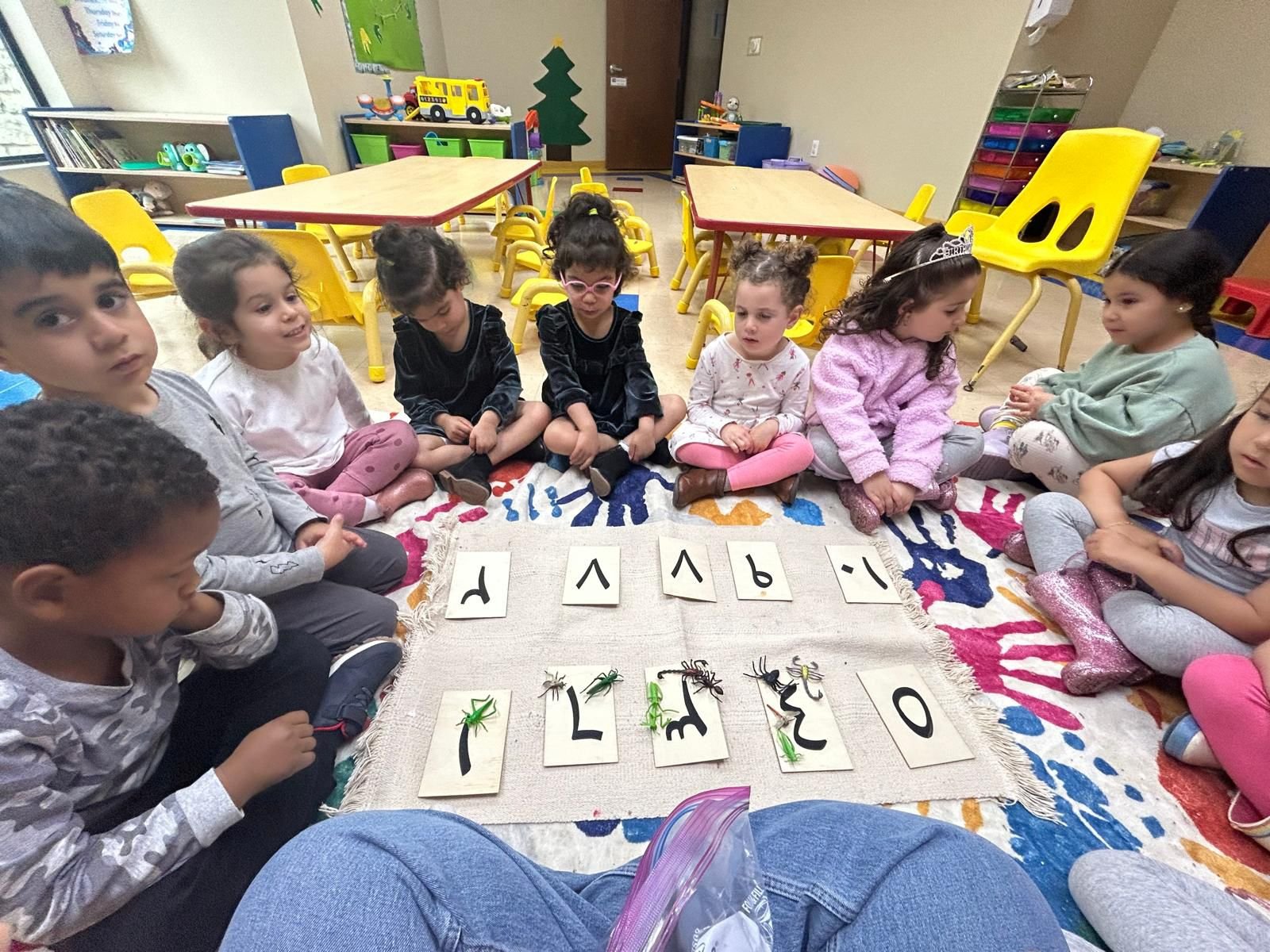


Blended Approach
Blending language immersion with the Montessori method in a preschool can create a rich, engaging learning environment that nurtures both language development and independent learning. By combining the language immersion approach with Montessori principles, you create an environment where language becomes a natural part of the child’s daily life, enhancing both their cognitive and social development.
Here’s how you can effectively integrate both:
1. Create a Multi-Language Environment
Label Everything: In a Montessori setting, the environment is a "third teacher." Label objects and areas of the classroom in both the immersion language (e.g., Spanish, French) and the primary language. This helps children connect foreign words with everyday items.
Language-Rich Materials: Incorporate books, art, and music in the immersion language. Choose materials that align with Montessori principles, like tactile or sensory experiences (e.g., picture books, sensory bins, or puzzles) that allow children to interact with the language.
2. Focus on Individualized Learning
Respect the Child’s Pace: In the Montessori method, each child learns at their own pace. Likewise, in a language immersion setting, it's important to respect each child's journey with the new language. Children will pick up the language at different rates, and the Montessori method allows for flexibility in meeting those individual needs.
Language Exposure Based on Interest: Just as Montessori encourages following the child’s interests, language immersion can be designed around what the child is naturally curious about. If a child is interested in animals, you might focus on animal names and sounds in the immersion language. This approach creates a natural and organic learning experience.
3. Use Practical Life Activities to Reinforce Language
Daily Routines in the Immersion Language: Incorporate the immersion language into everyday Montessori activities like cleaning, cooking, or gardening. For example, as children help with food prep, you can teach them the names of ingredients, tools, and actions in the target language. This links language learning with real-world tasks.
Hands-On Activities: Set up practical life activities that involve the use of both languages, such as sorting objects by color or size while practicing the language (e.g., “red,” “yellow,” “big,” “small” in the immersion language).
4. Develop a Bilingual Classroom with Mixed Age Groups
Peer Learning: In Montessori classrooms, children of different ages work together. You can use this to your advantage by pairing children who are more fluent in the immersion language with those who are just beginning. Older children can model the language, while younger ones learn by observing and engaging.
Community and Cultural Activities: Incorporate cultural elements from the immersion language. Celebrate festivals, read stories, and engage in cultural crafts and activities. This creates a deeper connection between the language and its cultural context, enriching the child’s understanding of the world.
5. Montessori Language Materials Adapted for Language Immersion
Sandpaper Letters: Adapt Montessori’s sandpaper letters for the immersion language. Children can trace letters or characters of the new language, associating sounds with symbols. This can be done in a playful, tactile manner, in line with Montessori’s emphasis on sensory learning.
Moveable Alphabet: Allow children to build words in the immersion language using the moveable alphabet. For example, as children learn a new vocabulary word, they can use the letters to spell it out, reinforcing their learning.
6. Immersive Listening and Interaction
Storytelling: Storytime in the immersion language is a great way to foster language development. Use books with rich illustrations and storytelling props. In a Montessori classroom, children should be encouraged to engage with the stories (retell, act out, or ask questions) in the new language.
Songs and Rhymes: Singing songs, chants, and rhymes in the immersion language is a fun way to build vocabulary and fluency. In the Montessori method, music is an important tool for learning, and language immersion can be enhanced through rhythm, repetition, and melody.
7. Focus on Language as a Tool for Expression
Encourage Conversation: One key aspect of Montessori is fostering independence and confidence in children’s expression. Encourage conversations in the immersion language, and create opportunities for children to express their thoughts, ideas, and feelings in both languages. This helps build bilingual communication skills.
Respect the Child’s Language Development: Children may mix both languages as they develop. In the Montessori classroom, it’s important to gently encourage language use in the immersion language while respecting that children are in different stages of language acquisition.
